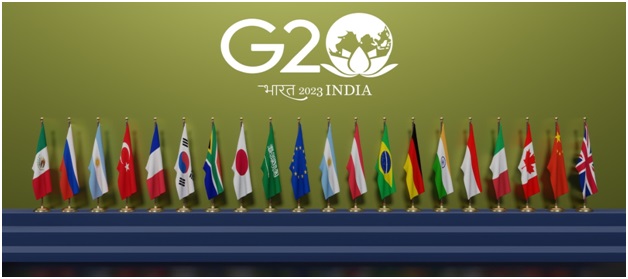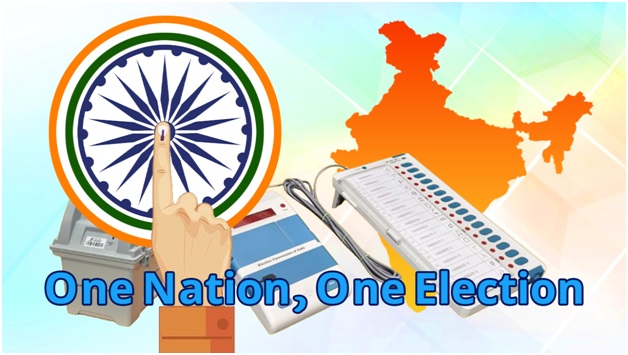At G20, the Eend of Old Multilateralism – and the Beginning of a New Order (Indian Express)

- 07 Sep 2023
Why in the News?
Delhi’s current emphasis is on building bridges between developing and developed countries. Many in the developed world are waking up to the importance of greater cooperation between the North and the South amidst the breakdown of relations between the East and the West.
What are the factors contributing to the weakening of global cooperation in the post-Cold War era?
- Russian Conflicts: International relations have been strained due to Russia's aggressive actions, notably its annexation of Ukraine's Crimean Peninsula in 2014 and the ongoing conflict with Ukraine.
- China's Territorial Ambitions: Concerns have arisen from China's territorial disputes with neighboring Asian countries, including India, Japan, the Philippines, and Vietnam.
- Economic Leverage: China's attempts to leverage its economic power for political and strategic purposes have led to growing distrust among nations worldwide.
- Change in Chinese Policies: A shift in Chinese policies under Xi Jinping, departing from the peaceful periphery and shared prosperity approach of the 1980s, has had adverse effects on regional and global institutions.
How is Asia reacting to China's actions?
- Security Institutions: New security coalitions such as the Quad, comprising India, the United States, Japan, and Australia, have been formed to counterbalance China's growing influence in the region.
- AUKUS Pact: The establishment of the AUKUS alliance, which includes Australia, Britain, and the United States, is a direct response to China's expanding military presence in the area.
- Questioning ASEAN's Role: China's assertive territorial expansion has raised concerns about the effectiveness of ASEAN-led regional organizations in maintaining stability.
- Bilateral Relationships: Many Asian nations are reinforcing bilateral ties to deter China's unilateral actions. For instance, the trilateral agreement involving the United States, Japan, and South Korea aims to enhance security in Northeast Asia.
- Economic Diversification: Countries like Japan and the United States are actively seeking to reduce their economic reliance on China by diversifying their trade partnerships.
How is India's role undergoing transformation?
- Central Player: India is increasingly assuming a central role in shaping both regional and global dynamics, evident in its active participation in forums such as the Indo-Pacific Quadrilateral Forum.
- G20's Evolution: India is advocating for the G20 to address the concerns of the Global South, indicating its aspiration to have a more significant role in global economic discussions.
- Shifting Alliances: While historically aligned with Moscow and Beijing for a multipolar world, India's focus has shifted due to China's growing assertiveness, leading it closer to nations like Australia, Japan, and the United States.
- Embracing the Indo-Pacific: India has embraced the Indo-Pacific concept and revitalized the Quad alliance to counterbalance China's influence in the region.
What are the key elements of India's new approach to multilateralism?
- Quad Collaboration: During the Jakarta summit, the Prime Minister of India emphasized the Quad's role in complementing ASEAN's efforts and promoting regional stability.
- Re-globalization Focus: India's External Affairs Minister, S Jaishankar, advocates for a diversified and democratic form of globalization that moves away from a production model centered around China.
- Collective Solutions: Despite the challenges faced in multilateralism, India remains committed to seeking collective solutions to various global issues, including the modernization of the global tax regime.
Global South Concerns: India places a strong emphasis on addressing the concerns of the Global South within the G-20 agenda, with a goal of fostering greater cooperation between developed and developing nations, rather than reviving past confrontational politics.
One Nation, One Election (Indian Express)

- 04 Sep 2023
Why in the News?
- The Centre on Saturday (September 2) set up a committee to examine various aspects, both legal and logistical, for implementing the “one nation, one election” idea.
- The Law Ministry has outlined seven terms of reference for the eight-member panel headed by former President Ram Nath Kovind and including Union Home Minister Amit Shah.
- One of the terms of reference is to examine if a constitutional amendment to facilitate simultaneous polls would have to be ratified by the states.
What is the 'One Nation One Election' system?
- The current electoral system in the country conducts separate elections for the Lok Sabha and state Assemblies with a five-year gap.
- This gap is based on the conclusion of the Lower House's tenure, the state government's term, or premature dissolution of either.
- State assemblies may not align their terms with each other or with that of the Lok Sabha, resulting in a continuous cycle of elections throughout the year.
- The 'One Nation One Election' proposal suggests holding simultaneous elections for all states and the Lok Sabha every five years.
- This would require restructuring the Indian election calendar to synchronize state and central elections.
- Voters would then cast their ballots for both the Lok Sabha and state assemblies on a single day, simultaneously or in phased manner as needed.
Amending the Constitution:
Constitutional Provisions:
- In India, Article 368 of the Constitution outlines the power and procedure for amending the Constitution.
- The interpretation of this provision has led to tensions between Parliament and the judiciary since 1951.
Mixing of Flexibility and Rigidity:
- During the debates of the Constituent Assembly, there was extensive discussion on whether the Constitution should be flexible or rigid.
- The British constitution is often considered flexible because it can be amended by Parliament just like any other ordinary legislation.
- In contrast, the United States Constitution cannot be amended without the ratification of at least three-fourths of the individual states.
India's Approach:
- The Indian Constitution adopted a combination of flexibility and rigidity.
- It allows for constitutional amendments through judicial interpretation and conventions established through usage.
Informal Amendments:
- Informally, the Constitution is modified through judicial interpretation and established conventions.
- For instance, in the process of appointing judges to the higher judiciary, although the Constitution refers to a consultation between the President and the Chief Justice of India, the Supreme Court's interpretation has evolved it to mean "concurrence."
- This interpretation led to the development of the collegium system for appointing judges, effectively bringing about a change in the essence of the Constitution.
What is the Amendment Process?
Simple Majority:
- Many provisions of the Constitution can be amended through a straightforward legislative process similar to passing regular laws in Parliament.
- This amendment method is achieved by a majority of those present and voting and does not require a quorum.
- Although Article 368 doesn't explicitly list such 'less significant' provisions, they are excluded from its scope throughout the Constitution, establishing a separate category.
- Examples include changing state names, admitting new states to the Union, and adjusting state boundaries.
Special Majority:
- For amending provisions that don't fall into the first category, Article 368 mandates that the amendment Bill must be approved by both Houses of Parliament with a majority of at least two-thirds of the members present and voting.
- According to Rule 158 of the Lok Sabha Rules, the total membership encompasses all members of the House, regardless of any vacancies or absentees at the time.
Ratification by States:
- A third category of provisions not only requires a special majority for amendment but also necessitates ratification by the legislatures of at least half of the states.
- Only after receiving ratification from the states can such an amendment be presented to the President for approval.
- These provisions pertain to the federal character of the Constitution and are commonly known as entrenched provisions.
- For instance, the 99th Constitutional Amendment in 2014, which established the national judicial accountability commission, was ratified by 16 state legislatures before receiving the President's approval.
- Similarly, in 2016, the 122nd Constitutional Amendment Bill introducing the Goods and Services Tax regime was ratified by 23 states.
Established Provisions:
- Article 368 identifies six segments of the Constitution that are subject to additional safeguards when it comes to their amendment.
- These segments include:
- Article 54 and 55, which pertain to the election of the President of India.
- Article 73 and 162, addressing the extent of executive power for the Union and states, respectively.
- Articles 124–147 and 214–231, dealing with the powers of the Supreme Court and the High Courts.
- Article 245 to 255, concerning the distribution of legislative, taxing, and administrative powers between the Union and the states.
- Article 81–82, governing the representation of states in Parliament.
- Article 368 itself.
State Ratification: A Supreme Court Perspective
- The significance of state ratification was highlighted in the 1992 Supreme Court case of Kihoto Hollohan v Zachillu.
- In this case, the constitutionality of the Tenth Schedule was challenged on the grounds that it had not been ratified by the states.
- The Tenth Schedule deals with the disqualification of elected representatives and aimed to, among other things, limit the jurisdiction of courts in matters related to disqualifications.
- This aspect of the amendment pertained to one of the six areas that require ratification by at least half of the states, namely, the jurisdiction of the Supreme Court and the High Courts.
- The Supreme Court ruled in favor of the validity of the Tenth Schedule but struck down the part of the amendment that tinkered with the jurisdiction of the Supreme Court and the High Courts.
Mains Question:
- Critically evaluate the impact of the 'One Nation One Election' proposal on India's political landscape, and elucidate the potential benefits and drawbacks of such a system? (10M)
